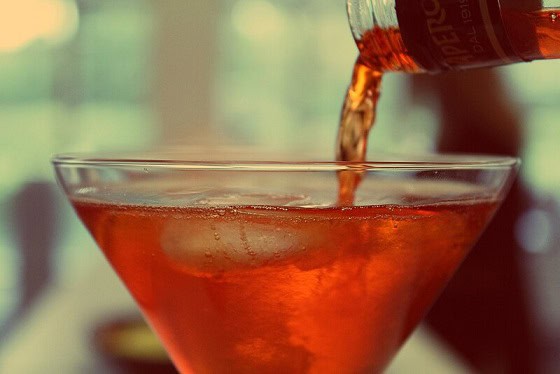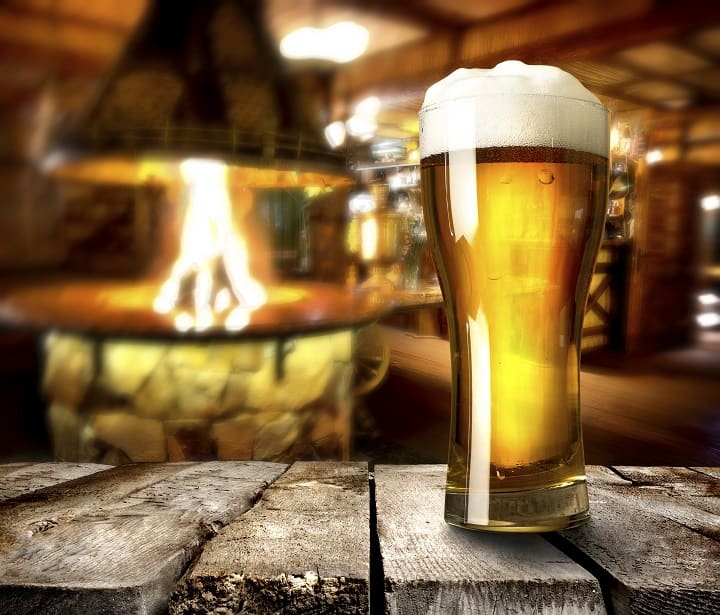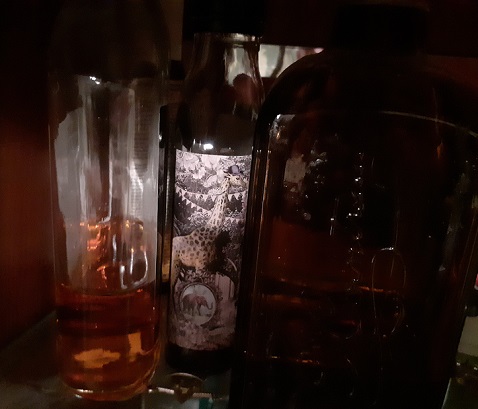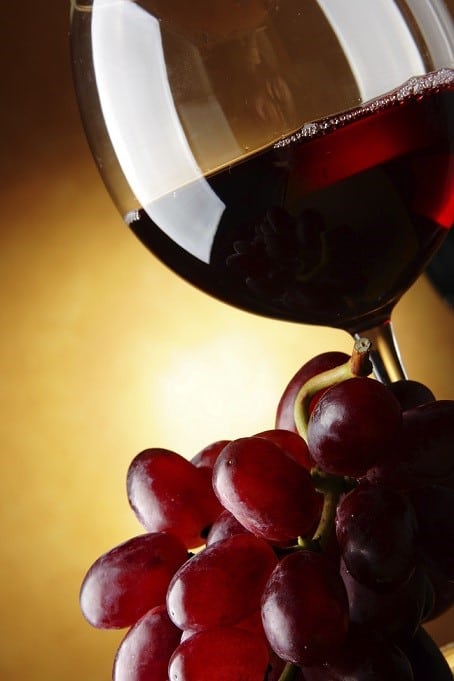 Bacteria pops up in strange and unexpected places when it comes to acne. One of the more surprising connections is to the stress explosion that teenagers constantly report.
Bacteria pops up in strange and unexpected places when it comes to acne. One of the more surprising connections is to the stress explosion that teenagers constantly report.
In 2019, it was discovered that two strains of p.acnes bacteria had receptors in their cell membranes for catecholamines, AKA adrenaline and noradrenaline, the two stress hormones which summon nervous energy and give you a burst of aggressive energy. When exposed to these hormones, they become more persistent and developed stronger biofilms, making them more entrenched.
We knew that stress could cause oily skin by spiking cortisol, but this was a much weirder connection. Now, a new entry has been made in our bacteria logbooks, and this time it concerns alcohol.
Yet another alcohol connection discovered!
Though I don’t recommend eliminating alcohol from your life, as you can easily drink several beers a week (perhaps one daily), we’re hungry for knowledge on this website and want every morsel of acne data we can get our hands on. A few weeks ago, we discussed how alcohol causes oily skin directly, by producing metabolites called fatty acid ethyl esters, which directly stimulate the sebaceous glands. These cause oily skin regardless of other characteristics of the beverage like the carb content (in beer).
More widely, alcohol’s acne dangers include 1) depletion of the antioxidant glutathione during its detoxification, 2) generation of the pro-inflammatory molecule acetaldehyde, and 3) depletion of important nutrients like vitamin C and vitamin E.
One fact is that after drinking alcohol, level in the sweat are equal to those in the bloodstream. For example, this 1980 study gave 14 volunteers a sweat patch, which clung to their skin, and measured the metabolites in their sweat to the finest decimal point. They were instructed to drink whisky, in either 1.0, 2.0 or 5.0g/per kg dosages. The study lasted 8 days. The scientists found that the concentration of ethanol in sweat rose in direct correlation with alcohol consumed, and in direct correlation with ethanol measured elsewhere in the body.
This brings us to our next study. Scientists wished to check whether bacteria found on the skin of humans metabolised the ethanol in their sweat, and produced any by-products. 5 species of bacteria were tested. These were Propionibacterium acnes, the classic acne bacteria. There was Staphylococcus aureus, a secondary inflammatory skin bacteria, and S. epidermidis, a more friendly skin bacteria (depending on circumstances). The other two were Streptococcus pyogenes and Pityrosporum ovale, found in human skin, but not closely connected to acne. The latter is correlated far more closely with rosacea, the shiny red “phantom acne”.
The conclusion: very high levels of acetaldehyde of 960μmol/l were formed by the bacteria from sweat. Most importantly, these were formed from “ethanol concentrations known to exist in sweat during normal social drinking“.
Different species act differently
 Acetaldehyde is the main toxic by-product of alcohol, responsible for the pounding headache and blurry eyes of a hangover. It’s produced during the first stage of ethanol metabolisation, after a reaction with the enzyme alcohol dehydrogenase (ADH). Acetaldehyde is later metabolised itself by the enzyme acetaldehyde dehydrogenase (ALDH), but not before spiking inflammation around the body. Acetaldehyde piles on redness and angriness to existing acne.
Acetaldehyde is the main toxic by-product of alcohol, responsible for the pounding headache and blurry eyes of a hangover. It’s produced during the first stage of ethanol metabolisation, after a reaction with the enzyme alcohol dehydrogenase (ADH). Acetaldehyde is later metabolised itself by the enzyme acetaldehyde dehydrogenase (ALDH), but not before spiking inflammation around the body. Acetaldehyde piles on redness and angriness to existing acne.
Previously, we believed that acetaldehyde was only systematic, roaming around the entire body and inflaming all in its path, and thus the skin as a natural consequence. But this study shows that it could actually concentrate in the skin, by the delivery route of ethanol in sweat, which is then converted by our skin’s microorganisms.
Importantly, there were large differences in the species’ conversion rates. P.acnes created large levels of 59nmol. The most active was S. aureus at 160nmol, followed by S.pyogenes at 118nmol, and S.epidermidis at 106nmol. The only microorganism with virtually no conversion whatsoever was Pityrosporum ovale, the rosacea yeast, at just 0.8nmol. Scientists then discovered that the 4 bacteria produced alcohol dehydrogenase (ADL), the enzyme produced in humans which converts alcohol to acetaldehyde. The P. ovale produced no detectable ADL.
Then there’s another question – what about the different p.acnes strains? There’s hundreds known, with those in class IA2 being especially malicious, and those in II and III being mild.
Some of the biggest differences between these strains come when they metabolise various compounds. For example, when malicious strains digest the skin’s oil using lipases, to acquire energy, they produce far more inflammatory by-products. When malicious strains have sufficient vitamin B12, they pump out large amounts of unstable porphyrins, while friendly bacteria have a porphyrin production ceiling.
Given this, I would be amazed if certain p.acnes strains didn’t pump out more acetaldehyde in response to alcohol than others. Your response to alcohol could defend on your exact skin flora. Likewise for S. aureus, which produced over twice as much as the p.acnes species overall, giving it a unique danger.
Gut bacteria manipulates alcohol’s effects
The conversion to acetaldehyde also has a connection to acne via the gut. Here’s a tale about one of the strangest diseases of our times – autobrewery syndrome.
To some it sounds like a dream come true, as certain microorganisms overgrow in your gut lining, which ferment dietary carbohydrates and produce ethanol in response. The result is constant drunkenness. It’s just like bacteria fermenting grape skins under the careful guidance of a French vineyard owner, or fermenting barley under a German beer elder, except that this time, it’s happening inside you.
The brewery isn’t in Hamburg or Bavaria – you are the brewery. You have no control over it, except by attempting to reduce (or increase) the microorganisms involved. People with autobrewery syndrome randomly find themselves drunk for no reason.
It sounds great, but some people become confused and worried as they start stumbling around and losing coordination, without even drinking. One 50 year old woman from Toronto passed out in the kitchen while making lunch for her children, despite not having touched a drop. She visited the emergency room 7 times before establishing the cause, with her blood alcohol levels once reaching the life-threatening level of 62 millimoles per liter.
In 2014, a woman was arrested for drunk driving near Buffalo, New York after driving erratically. A breathalyser revealed a blood alcohol content more than 4 times the legal limit. But she was acquitted in court in 2015 after blaming autobrewery syndrome; doctors testified that she had unusual levels of yeasts which converted carbohydrates from the diet into alcohol. Angry prosecutors planned to have the charges reinstated.
You even have secondary school teachers reporting that 12 year olds are blaming autobrewery syndrome for turning up drunk to school lessons. There’s almost certainly friend groups at school who are telling each other about this new get-out-of-jail-free card while teachers walk past thinking they’re discussing their homework. A mention in the Netflix show The Resident is believed to have sparked the trend.
I once read a post from a worried youth whose friend had devised an insane plan give himself auto-brewery syndrome and reap the “rewards”. This involved putting the microorganisms into his own body, via routes we cannot discuss on a PG website. Inevitability, this went horribly wrong and the friend experienced an infection. This put an end to his mad schemes, or at least that particular mad scheme.
How is this connected to acne?
 Just as gut bacteria convert carbohydrates to alcohol, some species can convert alcohol to acetaldehyde, like those we mentioned on the skin, using the enzyme alcohol dehydrogenase (ADH). Another bunch can then convert acetaldehyde to harmless acetic acid, using the enzyme acetaldehyde hydrogenase (ALDH), the same enzymes we humans produce.
Just as gut bacteria convert carbohydrates to alcohol, some species can convert alcohol to acetaldehyde, like those we mentioned on the skin, using the enzyme alcohol dehydrogenase (ADH). Another bunch can then convert acetaldehyde to harmless acetic acid, using the enzyme acetaldehyde hydrogenase (ALDH), the same enzymes we humans produce.
In short, the quality of your gut bacteria may significantly affect alcohol’s toxicity, whether it’s from beer, wine or whisky.
Helicobacter pylori, the infectious pathogen behind stomach ulcers (especially in poor Africa villages), has strong alcohol dehydrogenase activity, and thus the ability to produce acetaldehyde after you drink beer. But many friendly bacteria can metabolise these toxins, and reduce the harm. On example is Lactobacillus, the group used to ferment yogurt and give it its acidic tang. Many Lactobacillus produce both the ADH enzyme for alcohol and the ALDH enzyme for acetaldehyde, helpfully removing both.
It varies by species, as Lactobacillus rhamnosus, often found in aged cheeses, has a much stronger ability to metabolise acetaldehyde than the Lactobacillus acidopholus occasionally found in yogurt, and the popular prebiotic supplement Bifidobacterium lactis. In one study, it was tested directly. In human subjects, drinking milk fermented with Lactobacillus rhamnosus before drinking alcohol blunted the rise in bloodstream acetaldehyde afterwards. The friendly bacteria neutralised this inflammatory toxin before entering the wider body where it could spread its evil wings.
If you have an enriched colony of friendly bacteria, which suppress the malicious strains, alcohol will become less damaging for you. A daily bowl of yogurt could be a beer-surviving secret. Kefir could be a wine-saving solution.
Currently, we can’t judge the exact strength of this. You’re already spawning acetaldehyde all over the body after consuming alcohol; a wall of protective bacteria may only take away a few percentage points. Then there’s the different species. If some produce acetaldehyde from alcohol, but lack the ALDH enzyme to break down the toxic acetaldehyde that results, then they could become malicious, creating new waves of inflammatory acetaldehyde. H. pyrlori has this deadly combination, possessing ADH but lacking ALDH. According to this study, “The lack of ALDH in H. pylori may favour the accumulation of the very active and toxic acetaldehyde“. That’s dire for acne and everything you hold dear. Alongside candida, H. pylori is the most famous malicious gut microbe, but less famous ones may act similarly.
Those two enzymes aren’t the only alcohol detoxification pathways in humans. Some is also deactivated using P450 enzymes, catalase, and conversion to fatty acid ethyl esters. But if you have an abundance of strains like Helicobacter pylori, they could be sucking more alcohol in, and producing more acetaldehyde than you would otherwise have.
Alcohol and endotoxins
 In fact, gut bacteria and alcohol is a really a whole other topic, plus the effect it can have on acne. It’s an endless subject which you could lost in and never find your way out of.
In fact, gut bacteria and alcohol is a really a whole other topic, plus the effect it can have on acne. It’s an endless subject which you could lost in and never find your way out of.
Chronic alcohol consumption has been proven to increase several groups of malicious bacteria, including Actinobacteria and Proteobacteria, which includes sub-aggressors like Salmonella, Helicobacter, and E. coli. Meanwhile, it decreases beneficial strains like Firmicutes and Bacteroidetes. Firmucutes is proven to have anti-inflammatory properties in the host.
The malicious strains listed above are gram-negative, and a characteristic of gram-negative bacteria is possessing lipopolysaccharides called endotoxins in their cell membrane. Endotoxins are so toxic that in high dosages, they cause anaphylactic shock and death. However, in normal levels, they stimulate a pro-inflammatory response, with cytokines like interleukin-6 and IL-1beta. Both are linked to acne, and in fact, a 1983 study found that among 80 acne patients, there was significantly higher circulating levels of endotoxins produced by E. coli in their body.
Alcoholics have been shown to produce far more endotoxins than healthy drinkers. This combines with a loosening of the semi-permeable membrane (leaky gut syndrome), the firewall that allows healthy nutrients access to the bloodstream, while restricting inflammatory molecules.
The specific cause of this is acetaldehyde, which is proven to interfere with tight junction barrier proteins like zonulin-1 and occludin. These are like the hinges and bolts of each individual gate to the bloodstream, among many thousands. They weaken and become less secure, sometimes swinging shut properly like they used to, but sometimes not catching, and allowing vicious molecules to sneak through the gap. Alcohol abusers not only have more endotoxins being generated by gut bacteria, but a higher percentage of those entering the bloodstream (and later inflaming the skin).
Luckily, all this only kicks in at a high regular intake. There’s no way that a few beers per week would cause the cataclysmic shift in gut bacteria required.
Conclusion
Animals and bacteria diverged well over 1 billion years ago. A human being walking to work through a crowded street has nothing in common with 40 fluorescent bacterial cells in a scientist’s petri dish. Yet both of us possess the same enzymes used for metabolising alcohol: alcohol dehydrogenase (ADH) and acetaldehyde dehydrogenase (ALDH), just as glucose remains common to all life forms after billions of years. Bacteria is involved with alcohol metabolisation in humans, and in turn it is involved with alcohol’s effect on acne.
For the facial connection, there’s nothing new to recommend right now. P.acnes generates inflammatory acetaldehyde from alcohol on your face, consuming it from sweat. Perhaps one day we’ll be able to rub in a cream which deactivates the ADL enzyme.
The gut bacteria connection has more strategies you can deploy, as you can use the usual yogurt, prebiotic pills, kefir, sauerkraut etc. Also restrict elements that fuel negative bacteria, the easiest one being sugar.
Thanks for reading!

Any positives at all to drinking alcohol for acne or health in general? or should we try to limit our consumption as much as possible? Because it’s a bit difficult to say from all of the conflicting research on this subject.
You don’t need to remove all alcohol from your diet and you can still overindulgence every couple of weeks if you want. It all depends on what you observe in the mirror, at the end of the day. If your skin can visibly withstand indulging in wine then there’s no issue. As for positives, there’s definitely evidence that moderate drinking can lower blood pressure over time. Our goal with these articles is to gather as much information about the connection to acne/skincare as possible, not to preach to people to remove every last drop. Knowledge is power essentially.